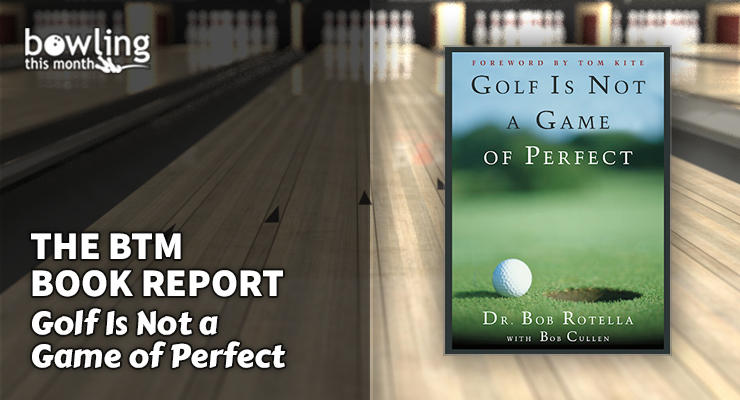This month, we’re looking at Dr. Bob Rotella’s Golf Is Not a Game of Perfect. This book covers a subject near and dear to the hearts of many bowlers: the mental game. Though its references to the PGA Tour are all pre-Tiger Woods, and are therefore somewhat dated, the lessons about the mental game are just as valuable to golfers today as they can be to bowlers. Of all the “golf versus bowling” comparisons that exist, it is the mental challenges and tools that are most similar between the two sports. With that, let’s take a look at some of the key learnings from this book and discuss its applications to bowling.
Throughout the book, we find specific advice for aspects of golf, along with examples from PGA Tour players that the author has worked with. One of the main themes is taking control of one’s thoughts to influence outcomes, rather than allowing events to control our thoughts. In one story about PGA great Gary Player, this concept is illustrated by his love of “fast greens” one week and “slow greens” the next. The lesson is clear: “you just have to love whatever greens you’re playing on.” This relates to another key mental truth: to achieve success, you must be free of fear.
Unsurprisingly, the topic of choking is also discussed. While most people associate choking with nerves, that’s not necessarily the case. Greats like Jack Nicklaus attribute some of their success to nerves—and the lack of those same nerves later in their careers—as a reason for some of their decline. Dr. Rotella suggests that choking is simply allowing anger, doubt, or fear to distract you right before a shot when you should instead be focusing entirely on your routine and confident visualization. Using the example of watching the scoreboard, he says some golfers are capable of taking in score information and then refocusing entirely on their next shot. However, it’s much easier—particularly for amateurs—to simply forget about the scorecard entirely.
The book also goes into great detail regarding pre-shot (or pre-swing) routines, claiming that 80% of what happens on a shot is determined before you even start the swing. While no two routines are alike, the author illustrates several important similarities and priorities in building a pre-shot routine:
- It is best to choose the smallest target possible.
- The simplest routines ...
This article is only available to Bowling This Month subscribers. Click below to get instant access to this article and all of our other premium instructional content.
Subscribe to Bowling This Month
Already a Bowling This Month subscriber? Click here to log in.
